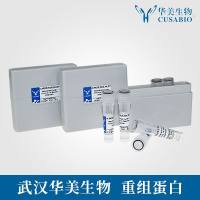Biosensors for Characterizing the Dynamics of Rho Family GTPases in Living Cells
互联网
- Abstract
- Table of Contents
- Materials
- Figures
- Literature Cited
Abstract
The biosensors developed in the authors' laboratory have been based on different designs, each imparting specific strengths and weaknesses. Here we describe detailed protocols for the application of three biosensors exemplifying different designs?first, a design in which an environmentally sensitive dye is used to report the activation of endogenous Cdc42, followed by two biosensors based on FRET, one using intramolecular and the other intermolecular FRET. The design differences lead to the need for different approaches in imaging and image analysis. Curr. Protoc. Cell Biol. 46:14.11.1?14.11.26. © 2010 by John Wiley & Sons, Inc.
Keywords: biosensors; Rho family GTPases; FRET; live cell imaging
Table of Contents
- Introduction
- Basic Protocol 1: Production and Use of meroCBD, Dye‐Based Biosensor for Cdc42
- Support Protocol 1: Labeling CBD‐EGFP with Reactive Fluorophore
- Basic Protocol 2: Imaging meroCBD in Living Cells
- Basic Protocol 3: Expressing the RhoA Single‐Chain Biosensor
- Basic Protocol 4: Imaging the RhoA Biosensor
- Basic Protocol 5: Expression of Rac1 Flair, Dual‐Chain Fret Biosensor for Rac1
- Basic Protocol 6: Imaging Rac1‐Flair
- Basic Protocol 7: Image Processing Procedures
- Reagents and Solutions
- Commentary
- Literature Cited
- Figures
Materials
Basic Protocol 1: Production and Use of meroCBD, Dye‐Based Biosensor for Cdc42
Materials
Support Protocol 1: Labeling CBD‐EGFP with Reactive Fluorophore
Materials
Basic Protocol 2: Imaging meroCBD in Living Cells
Materials
Basic Protocol 3: Expressing the RhoA Single‐Chain Biosensor
Materials
|
Figures
-
Figure 14.11.1 Fluorescent biosensor designs. (A ) MeroCBD, biosensor of endogenous Cdc42 activation. Here, a fragment of Wiskott‐Aldrich syndrome protein (WASP) that binds only to activated Cdc42 is covalently derivatized with an environmentally sensitive dye. When the WASP fragment encounters and binds to activated Cdc42, the solvation of the dye by water is reduced, leading to a fluorescence change. Advantages of this design include the ability to study endogenous protein, and enhanced sensitivity due to direct excitation of a bright, long‐wavelength dye (as opposed to indirect excitation via FRET). The disadvantage is the need for microinjection, electroporation, or some other means to load the covalently tagged protein biosensor into cells. (B ) RhoA biosensor. Here a fragment of Rhotekin that binds only to activated RhoA is attached to RhoA as part of the same protein chain. Two different fluorescent proteins undergoing FRET are in the chain between RhoA and the Rhotekin fragment, such that binding of the fragment to activated RhoA alters the distance and/or orientation between the fluorescent proteins, affecting FRET. This biosensor is fully genetically encoded, greatly simplifying loading into the cell. Because the Rhotekin fragment is attached to the RhoA, image processing is simplified relative to the dual‐chain sensor shown in (C) (see text). (C ) Rac1 FLAIR, biosensor of Rac1 activation. This design is similar to that of the RhoA biosensor, but here the PAK fragment used to bind activated Rac1 is not part of the same chain as the Rac1. The use of a dual‐chain, intermolecular FRET design enhances sensitivity because, unlike the single‐chain design, there is no FRET when the biosensor is in the off state. Additional image processing (bleed‐through correction) is required because the biosensor components can distribute differently throughout the cell. View Image -
Figure 14.11.2 Transmittance spectra for the “Scripps Custom” dichroic mirror (Chroma Technology, lot no. 511111886). View Image -
Figure 14.11.3 x ‐ y translational image registration artifacts generate features on ratio images. In panel (A ), a correctly registered ratio image of MeroCBD is shown. Panel (B ) shows the ratio image from the same cell without registration. In the latter case, the dye image was misaligned by −5 pixels in both x and y directions. The white arrows in both figures point to regions where misalignment produces edge artifacts and other artifactual features. In (B), a lower‐ratio rim can be seen on one side of the nucleus, and a higher ratio on the opposite side. Similarly, edge artifacts appear as higher ratio on predominantly one side of the cell, with an artifactually low ratio on the opposite side. View Image -
Figure 14.11.4 Transmittance spectra for the “Quad Custom” dichroic mirror (Chroma Technology, lot no. 511112038). View Image -
Figure 14.11.5 A representative histogram from a shade‐corrected and background‐subtracted image, prior to masking. The prominent histogram peak at zero intensity is followed by a continuous distribution of pixels at a range of positive intensity values. Threshold masking to remove pixels of too low an intensity is performed using this histogram. One maximizes selection of pixels from within the cell while removing pixels outside the cell, including noise around the periphery. View Image -
Figure 14.11.6 Image shear between two cameras creates artifacts in ratio images. In the upper panels, calibration grid images from two cameras are overlaid with and without shear correction (red arrow: two channels aligned relative to the corner indicated). In the lower panels, the ratios of RhoA biosensor readouts from the two camera channels are shown with and without shear correction. A peripheral ruffle shows a large artifactual feature when correction is not applied (white arrow). View Image -
Figure 14.11.7 Effect of the multiplication factor during ratiometric calculation. In panel (A ), using a scaling factor of 1000 produced a smooth histogram distribution in a ratio image. Panel (B ) shows the same ratio image with the scaling factor of 25. Though the general distribution pattern is similar, the histogram distribution in (A) retains higher bit‐depth resolution. View Image
Videos
Literature Cited
| Literature Cited | |
| Ausubel, F.M., Brent, R., Kingston, R.E., Moore, D.D., Seidman, J.G., Smith, J.A., and Struhl, K. (eds.). 2009. Current Protocols in Molecular Biology. John Wiley & Sons, Hoboken, N.J. | |
| Del Pozo, M.A., Klosses, W.B., Alderson, N.B., Meller, N., Hahn, K.M., and Schwartz, M.A. 2002. Integrins regulate GTP‐Rac localized effector interactions through dissociation of Rho‐GDI. Nat. Cell Biol. 4:232‐239. | |
| dos Remedios, C.G. and Moens, P.D. 1995. Fluorescence resonance energy transfer spectroscopy is a reliable “ruler” for measuring structural changes in proteins: Dispelling the problem of the unknown orientation factor. J. Struct. Biol. 115:175‐185. | |
| Heikal, A.A., Hess, S.T., Baird, G.S., Tsien, R.Y., and Webb, W.W. 2000. Molecular spectroscopy and dynamics of intrinsically fluorescent proteins: Coral red (dsRed) and yellow (Citrine). Proc. Natl. Acad. Sci. U.S.A. 97:11996‐12001. | |
| Hodgson, L., Nalbant, P., Shen, F., and Hahn, K. 2006. Imaging and photobleach correction of Mero‐CBD, sensor of endogenous Cdc42 activation. Methods Enzymol. 406:140‐156. | |
| Kaighn, M.E. 1973. Tissue Culture Methods and Applications (J. Kruse and J. Patterson, eds.) Academy Press, New York. | |
| Kraynov, V.S., Chamberlain, C., Bokoch, G.M., Schwartz, M.A., Slabaugh, S., and Hahn, K.M. 2000. Localized Rac activation dynamics visualized in living cells. Science 290:333‐337. | |
| Lakowicz, J.R. (ed.). 1999. Principles of Fluorescence Spectroscopy, pp. 368‐377. Kluwer Academic/Plenum Publishers, New York. | |
| Machacek, M., Hodgson, L., Welch, C., Elliott, H., Pertz, O., Nalbant, P., Abell, A., Johnson, G.L., Hahn, K.M., and Danuser, G. 2009. Coordination of Rho GTPase activities during cell protrusion. Nature 461:99‐103. | |
| Michaelson, D., Silletti, J., Murphy, G., D'Eustachio, P., Rush, M., and Phillips, M.R. 2001. Differential localization of Rho GTPases in live cells: Regulation by hypervariable regions and RhoGDI binding. J. Cell Biol. 152:111‐126. | |
| Miyawaki, A. and Tsien, R.Y. 2000. Monitoring protein conformations and interactions by fluorescence resonance energy transfer between mutants of green fluorescent protein. Methods Enzymol. 327:472‐500. | |
| Nalbant, P., Hodgson, L., Kraynov, V., Toutchkine, A., and Hahn, K.M. 2004. Activation of endogenous Cdc42 visualized in living cells. Science 305:1615‐1619. | |
| Nguyen, A.W. and Daugherty, P.S. 2005. Evolutionary optimization of fluorescent proteins for intracellular FRET. Nat. Biotechnol. 23:355‐360. | |
| Ohashi, T., Galiacy, S.D., Briscoe, G.M., and Erickson, H.P. 2007. An experimental study of GFP‐based FRET, with application to intrinsically unstructured proteins. Protein Sci. 16:1429‐1438. | |
| Pertz, O., Hodgson, L., Klemke, R.L., and Hahn, K.M. 2006. Spatiotemporal dynamics of RhoA activity in migrating cells. Nature 440:1069‐1072. | |
| Rizzo, M.A. and Piston, D.W. 2005. A high contrast method for imaging FRET between fluorescent proteins. Biophys. J. 88:L14‐L16. | |
| Robey, P.G. and Termine, J.D. 1985. Human bone cells in vitro. Calcif. Tissue Int. 37:453‐460. | |
| Robinson, J.P., Darzynkiewicz, Z., Hoffman, R., Nolan, J.P., Orfao, A., Rabinovitch, P.S., and Watkins, S. (eds.). 2009. Current Protocols in Cytometry. John Wiley & Sons. Hoboken, N.J. | |
| Sambrook, J., Fritsch, E.F., and Maniatis, T. 1989. Molecular Cloning: A Laboratory Manual. Cold Spring Harbor Laboratory Press, Cold Spring Harbor, N.Y. | |
| Shen, F. and Price, J.H. 2006. Melanoma co‐culture outgrowth model for testing complete tumor contaminant ablation. Cytometry A 69:573‐581 | |
| Shen, F., Hodgson, L., and Hahn, K. 2006. Digital autofocus methods for automated microscopy. Methods Enzymol. 414:620‐632. | |
| Shen, F., Hodgson, L., Price, J.H., and Hahn, K.M. 2008. Digital differential interference contrast autofocus for high‐resolution oil‐immersion microscopy. Cytometry A 73:656‐666. | |
| Toutchkine, A., Kraynov, V., and Hahn, K. 2003. Solvent‐sensitive dyes to report protein conformational changes in living cells. J. Amer. Chem. Soc. 125:4132‐4145. | |
| Toutchkine, A., Nguyen, D.V., and Hahn, K.M. 2007a. Simple one‐pot preparation of water‐soluble, cysteine‐reactive cyanine and merocyanine dyes for biological imaging. Bioconjug. Chem. 18:1344‐1348. | |
| Toutchkine, A., Nguyen, D.V., and Hahn, K.M. 2007b. Merocyanine dyes with improved photostability. Org. Lett. 9:2775‐2777. | |
| Wang, Y.L. 2007a. Computational restoration of fluorescence images: Noise reduction, deconvolution, and pattern recognition. Methods Cell Biol. 81:435‐445. | |
| Wang, Y.L. 2007b. Noise‐induced systematic errors in ratio imaging: Serious artifacts and correction with multi‐resolution denoising. J. Microsc. 228:123‐131. |







